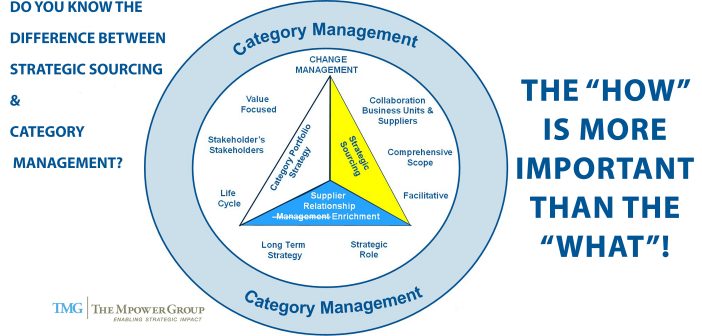Over a year ago we, at The Mpower Group, tapped into this major conversation around the Difference between Strategic Sourcing and Category Management. The response has been overwhelming and many, many organizations have embarked on the journey to make the Transformation, and an equal number of organizations are just not there yet (I look at that as job security 😊!). We have a comprehensive Transformation Roadmap, numerous variations of a Category Management process, a Change Management framework and toolkit, Governance models, Technology architectures, a comprehensive training curriculum and every other imaginable process, tool and methodology known to Sourcing consultants everywhere BUT I believe that in many cases it is the simple stuff we take for granted and often overlook. Working in Teams is one of those Change Management tools that seems simple and we view as a no-brainer in increasing collaboration. But the truth is that there is a science to Working in Teams that focuses on “How” the members work together and not just “What” they produce which significantly increases the value they provide.
An article in HBR “How to Create Executive Team Norms – and Make Them Stick” reminded me just how important teaming can be. This article focuses on Executive teams, but the approach should be applied to any team. This article refers to team norms as “Group norms are a set of agreements about how members will work with each other and how the group will work overall. These agreed-upon behaviors allow the team to increase its collective performance through healthy debate and clarity of purpose and roles.” We refer to these group norms as Team Principles and they are INVALUABLE. We look at Team Principles as a set of “rules of the road”. Here is an example:
| Team Principles |
| “Real” work will be done by all members of the team |
| The whole team is responsible for the whole deliverable |
| How we work together is as important as what we do |
| Respect each other’s differences |
| There will be recognition and consequences for both outstanding and inadequate behavior |
| All team members must attend team meetings and be on time |
| Leave your title at the door |
| Minutes will be taken at each meeting – responsibility will rotate |
| No team leader to start, the team will choose its own leader |
| Leverage each other’s strengths – value differences |
The other difference is that a “Team” is not the same as a “Group”. Here are the differences:

In addition, here are the attributes of a successful team:


When teams work, they are a very powerful vehicle to get work done and make change happen. Category Management is a huge change for an organization. Engaging your stakeholders and making them part of a high-performance work team can ensure they are committed to the collective goals of the project. But don’t assume that putting people together (a group) necessarily makes a team – that requires care and feeding. In addition to the critical success factors above, here are a few things to think about:
- Clearly define the Objective and Goals for the team – get everyone to validate and agree
- Use your Team Principles to hold one another accountable
- Assign Roles such as:
- Leader (this role can rotate)
- Facilitator – manages meetings, develops / distributes agendas, meeting notes
- Keeper of the Team – responsible for the health and welfare of the team. This role ensures the “how” is constructive, is often overlooked but is critical
- Keeper of the Plan – manages the project plan and keeps everyone on track
- Keeper of the Boundary – ensures that the work of the team is directly connected to achieving its goals and objectives
- Keeper of the Linkages – ensures the team understands how their works impacts / ties into other initiatives and may be the liaison
- Pay attention to the stages of teaming (Forming, Storming, Norming, Performing and Ajourning) – all teams go through them. If you add new members, the team may revert back to a prior stage – that is OK.
Teaming is a very critical Change Management tool and can be invaluable as you are moving from Strategic Sourcing to Category Management. To make that change happen successfully the “How” (working in teams) IS more important than the “What”!
Let us know what you think and join in the conversation . . . . . . .


